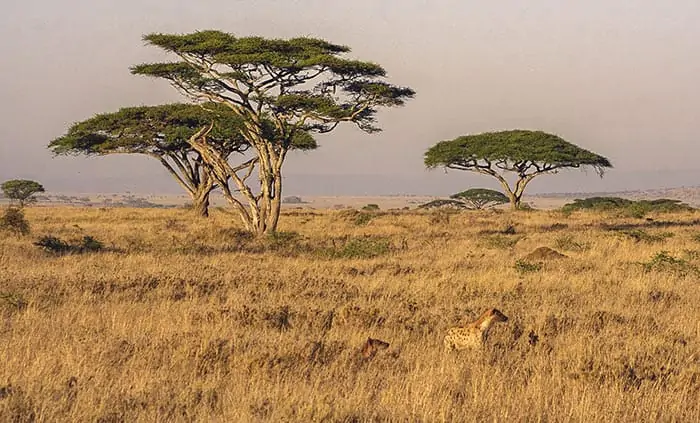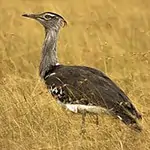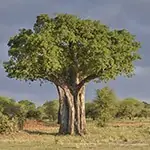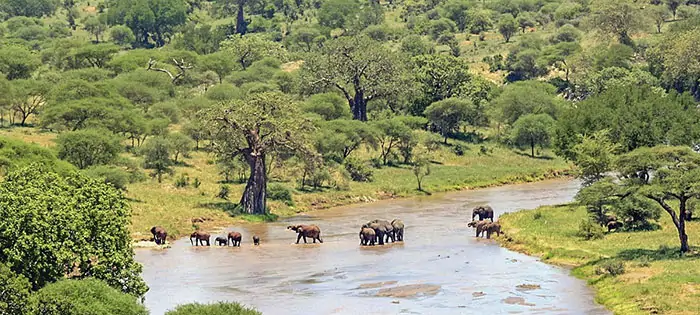 Picture a safari straight out of a Disney movie. Plains of gold for as far as the eye can see. These plains are made up of tall grass and the iconic Acacia trees scorched under the unforgiving Tanzania sun. Hidden under these thin, umbrella-shaped trees, trying to find relief from the sun, are all kinds of creatures.
Picture a safari straight out of a Disney movie. Plains of gold for as far as the eye can see. These plains are made up of tall grass and the iconic Acacia trees scorched under the unforgiving Tanzania sun. Hidden under these thin, umbrella-shaped trees, trying to find relief from the sun, are all kinds of creatures.
However, just like a movie, there is one place these hardy beasts can find a reprieve from the heat. A place where there are abundant trees for shade and best of all water. This place is the Tarangire River.
Tarangire River is a perennial river that starts in the Irangi Hills. It runs through the center of the Tarangire National Park and eventually feeds into Lake Burange.
Tarangire’s Animals
More than 500 species of birds make their home along the banks and in the trees and swamps lining the Tarangire river. They are joined by everything from the nomadic wildebeest, buffalo and waterbuck to giant herds of elephants. Tarangire is also home to baboons, giraffes, and zebra.

Kori Bustard
Of the birds found in Tarangire, there are a few of note. The ostrich is the largest bird in the world and has hilarious mating practices. The Kori bustard is the heaviest flying bird in the world, growing up to 5 feet tall. True bird-watchers will be on the hunt for more exotic finds, such as the red-and-yellow barbet, pygmy falcon, and African pygmy kingfisher. The stunning yellow-colored lovebird is also available for those who look.
Predators
Where there are food animals there are sure to be predatory animals close by. Tarangire is home to over 700 tree-climbing lions. They are commonly seen by visitors. There are also rarely seen cheetahs and leopards lurking among the trees and grass. Tarangire’s trees hide pythons, as well, adding a little extra challenge for the Tarangire visitor to spot. Scavenging animals can also be seen, from the common spotted hyena to the more elusive wild dog.
Tarangire’s Landscape

Baobab Tree
Even though the park draws it’s thousands of visitors to animal watch, there is much more to the park than the animals. The mixed landscape and unique vegetation make Tarangire different from the rest of Africa’s northern safari regions. There is the famous Baobab tree scattered along the hilltops. They are surrounded by the tall grasses and large termite mounds. These mounds occasionally house dwarf mongoose after the termites have moved on. This combined with the vast swamps and grassy savannahs gives you a landscapes just as varied and spectacular as any in Tanzania.
Wet Season
Visitors who venture to the park during the wet season won’t be disappointed. There are elephants present year-round, and the while the level of wildlife is comparatively low, it’s more than made up for by the lush green scenery that accompanies the flowing river. Not to mention the fact that the tourists are far more dispersed across the park’s 1,096 square miles, rather than clustered near the animals.
 Location
Location
Tarangire National Park is just a few hours’ drive from Serengeti National Park, Lake Manyara National Park, and Ngorongoro Crater, so although Tarangire is one of four national parks on Tanzania’s ‘northern safari circuit,’ its proximity to Serengeti means that it is often overlooked or rushed through. However, Tarangire is second only to Serengeti in its concentration of wildlife among Tanzania’s parks, and its low visitor attraction can make your trip that much more special, since you will get more alone-time with the many wonders Tarangire has to offer.
In conclusion, when planning your Africa trip don’t forget to include a safari. After all, when will you ever return to Africa? And while you are there make sure to add Tarangire National Park to your list of must-see place. You won’t be disappointed.


